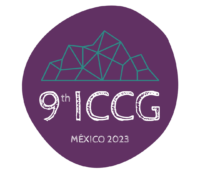Key words: Wild boars, Palestine, Political Ecology, Slow Violence
Our story begins in a small village at the heart of Palestine, Iskaka of Salfeet district . Like any other Palestinian place, it has been under different modes of Zionist colonial domination. In the last 15 years an additional layer of rule crystalized when a newcomer joined the ranks and file of the Israeli state. This time it was an animal, a wild boar, introduced by the Israeli state to the Westbank. Within the space of years this animal had bred, its ever-growing presence an epidemic, an animalized technology, which has incrementally afflicted the everyday subsistence of Palestinian families and communities. Protecting agricultural produce from wild boars has proved impossible, especially considering Israeli restrictions and the minimal support from the Palestinian Authority. As a result, a long tradition of seasonal agriculture, especially in summer, has nearly been destroyed, and with it, a particular Palestinian lifestyle. The destruction of this lifeline has not solely affected village modes of production. It has entailed a set of overlapping regimes of violence that work in tandem, interweaving Israeli forms of colonial rule with the Palestinian Authority’s politics of corruption, lethargy, and de-developmental strategies. In this paper, I use Rob Nixon’s 1 notion of slow violence to gauge the long-term development of settler colonialism through the terrain of political ecology. Here, following William Cronon,2 I provide a real-time exploration of the historical and environmental processes which shape this particular settler colonial project and its lived realities. Through the entry and spread of wild boars, village life has been transformed in Salfit district in profound and complex ways, a novel and challenging political-ecological reality. In the village of Deir Istya in Salfit district, a women narrated to me how she sold her dowry, gold accessories worth around three-thousand US dollars, to buy a small plot of land in her village. She made this decision in order to uplift her family, which relied only on her husband’s daily labor to survive. On this land she planted olive trees. However, In the olive season, she was attacked by a wild boar, nearly sustaining a fatal injury. Traumatized by this experience, she felt terrorized and disempowered, unable to continue farming her land. This attack led to her abandoning the plot, which at the point we spoke had transformed back into wilderness. In an adjacent village, another woman lamented the incremental confinement in their homes that she and her neighbors face due to fear of being attacked by a boar. This creeping and growing reality has curtailed women’s mobility, ending a plethora of seasonal and leisure activities which connected them to neighboring villages, as well as to Palestinian gruella fighters, once active in these spaces. Wild boars thrive, feeding on agricultural plots and on the waste from settlements. A community religious figure in another village spoke to me about his relative, a young pregnant woman, who had experienced a novel, mushrooming skin disease, a condition never heard of before in this area, which jeopardized her health and her pregnancy. Its source in his community was the running sewage of Slafit city and the adjacent Ariel settlement, areas of Israeli settlement, which infiltrate the village space. Waste run off from these settlements has created a lake of sewage in his village. This sewerage and its toxic effects have profoundly impacted Palestinian village peoples’ leisure, health, and wellbeing. This lake pours into a valley, now named locally, the valley of sewage. It is in this confluence of conditions in which wild boars, leishmania disease, as well as other airborne diseases spread. In such a precarious place, Palestinian villagers have been narrating stories about the workings of slow violence. In this paper, I would like to capitalize upon the concept of slow violence and explore the production of these stories in the last twenty years, their circulation, and their amplification to an extent where some evolve into myths about the powers of a wild boar. This will be an ethnographic study premised upon a decolonizing story telling methodology.
2 William Cronon, “Changes in the Land: Indians, Colonists, and the Ecology of New England.” New York : Hill and Wang, 1983.
1 Rob Nixon,” Slow Violence and the Environmentalism of the Poor.” London :Harvard University Press, 2011.
